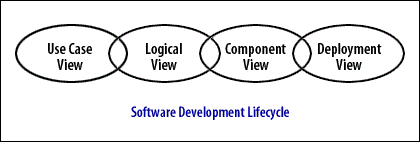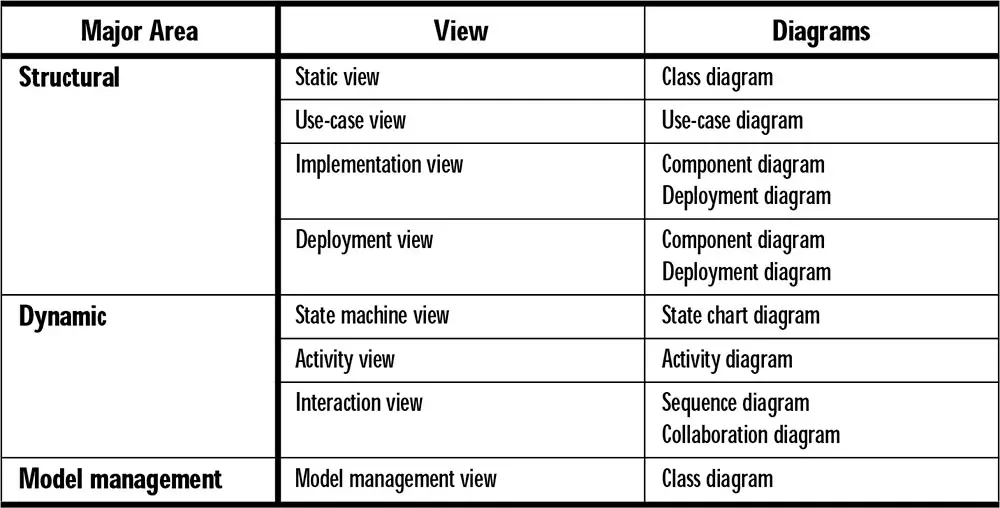| Lesson 5 | Four views into the software development process |
| Objective | Define the four classifications of the models included in the UML. |
Four Views into the Software Development Process
With any complex subject there is a need to organize details into manageable groups or categories.
The UML diagrams have been grouped to provide some insight into how they are commonly applied.
The four groups are referred to as views: the use case view, the logical view, the component view, and the deployment view.
Each view includes one or more diagrams that are well suited for representing that aspect of the system. However, these views are defined purely for communication purposes and should not be interpreted as the only way the models may be applied.
The UML diagrams have been grouped to provide some insight into how they are commonly applied.
The four groups are referred to as views: the use case view, the logical view, the component view, and the deployment view.
Each view includes one or more diagrams that are well suited for representing that aspect of the system. However, these views are defined purely for communication purposes and should not be interpreted as the only way the models may be applied.

Four views
The four views address typical problems encountered in developing software. First, the developer must figure out what the users want (the use case view). Then the developer has to represent his or her notion of what the system would do and how it would work (the logical view). Next the software has to be constructed and packaged in a way that will allow it to be managed (the component view). Finally, the software must be installed and managed in a particular hardware environment (the deployment view).
Model Grouping
The grouping of models is by no means unanimous. One team adds a concurrency view. Others make up their own groupings.
We are trying here to keep consistent with the documentation you will find with the UML specification.
We are trying here to keep consistent with the documentation you will find with the UML specification.
In the next four lessons, a description of each view and the diagrams contained within them will be provided.
The rest of the course is devoted to a complete description of each diagram.
The rest of the course is devoted to a complete description of each diagram.
UML Views
UML includes a variety of diagrams that are used in the analysis and design of a system.
UML is divided into eight views. Each view is a set of diagrams that depict some aspect of a system. These eight views are grouped into three major areas:
The structural view describes the static structure of a software system, including the classes, the components, and their relationships. The dynamic view describes the implementation of business logic in the design of individual classes and the interaction of classes and components. The model management view describes the relationships between UML models. In the preceding section, you learned that partial models are used to describe subsystems. The model management view describes the relationships between subsystems. The specifics of each of the UML views and diagrams will be discussed throughout this course. Table 2-5 lists the eight UML views and the diagrams used to develop each view.
- structural,
- dynamic, and
- model management.
The structural view describes the static structure of a software system, including the classes, the components, and their relationships. The dynamic view describes the implementation of business logic in the design of individual classes and the interaction of classes and components. The model management view describes the relationships between UML models. In the preceding section, you learned that partial models are used to describe subsystems. The model management view describes the relationships between subsystems. The specifics of each of the UML views and diagrams will be discussed throughout this course. Table 2-5 lists the eight UML views and the diagrams used to develop each view.

In the next lesson, the use case view will be discussed.